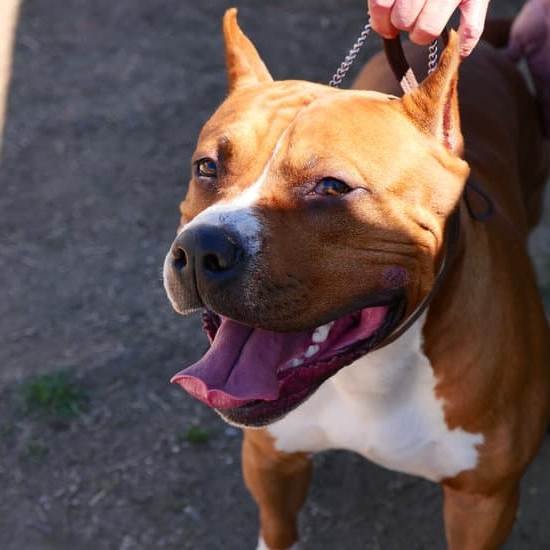Dogs barking excessively when left home alone can be a common issue for many pet owners. Learning how to train your dog not to bark when home alone is crucial in ensuring a peaceful environment for both your furry friend and your neighbors. It’s essential to address this behavior early on to prevent it from becoming a persistent habit.
Training your dog to be calm and quiet when left alone is not only beneficial for maintaining a harmonious living situation but also for the well-being of your pet. Dogs that bark excessively when they are alone may be experiencing separation anxiety, boredom, or other triggers that need to be addressed through proper training techniques.
By understanding the reasons behind your dog’s barking behavior when left solo, you can start assessing their habits and patterns to effectively tackle the issue. Creating a consistent routine and a secure environment, implementing positive reinforcement training methods, and engaging in enrichment activities are some of the key steps in training your dog not to bark when home alone.
Understanding Why Dogs Bark When Home Alone
Exploring Reasons Behind Barking Behavior
When it comes to understanding why dogs bark when home alone, it is essential to take into account various factors that may contribute to this behavior. One common reason is separation anxiety, which can cause distress and insecurity in dogs when they are left alone.
Additionally, boredom can lead to excessive barking as a way for the dog to release pent-up energy or seek attention. Territorial instincts may also play a role, with some dogs barking to alert their owners of perceived threats in their environment.
Analyzing Your Dog’s Barking Habits
To effectively address your dog’s barking behavior when home alone, it is crucial to observe and analyze their habits. Take note of when the barking occurs, how long it lasts, and any triggers that may prompt the behavior. Understanding these patterns can help you tailor your training approach to suit your dog’s specific needs. By identifying the root cause of the barking, you can develop a more targeted strategy for curbing this behavior.
Recognizing Patterns and Triggers
In order to train your dog not to bark when home alone, it is important to recognize patterns and triggers that may exacerbate their barking tendencies. Some dogs may bark in response to specific noises outside, while others may bark out of frustration or anxiety.
By pinpointing these triggers, you can work on desensitizing your dog to them and implementing strategies to redirect their focus. Through careful observation and analysis, you can gain valuable insights into your dog’s barking behavior and take proactive steps towards addressing it effectively.
Assessing Your Dog’s Barking Behavior
When tackling the issue of how to train a dog not to bark when home alone, it is crucial to first assess and understand your dog’s barking behavior. Every dog is unique, and their reasons for barking when left alone can vary. By taking the time to observe and analyze your furry friend’s habits, you can better address the root cause of their excessive vocalization.
One way to assess your dog’s barking behavior is by keeping a log or journal of when they tend to bark the most. Note the time of day, any specific triggers (such as noises or activities), and how long the barking episodes last. This information can help you identify patterns and understand what may be causing your dog’s distress or anxiety when alone.
Furthermore, pay attention to your dog’s body language and overall demeanor when they are barking. Are they pacing, whining, or exhibiting signs of stress? Understanding these subtle cues can provide valuable insights into how your dog is feeling and why they may be reacting with excessive barking. By assessing your dog’s behavior in detail, you can tailor your training approach to effectively address their specific needs and concerns.
Establishing a Routine and Environment
Establishing a routine and creating a conducive environment are essential steps in training your dog not to bark when home alone. Dogs thrive on consistency, so establishing a daily routine for your furry friend can help in reducing their anxiety and barking behavior. Below are some key tips on how to set up a routine and environment that can aid in training your dog:
- Set specific times for feeding, playtime, walks, and potty breaks to create predictability for your dog.
- Ensure that your dog has a comfortable and safe space where they can rest when you’re not around. This could be a cozy crate or a designated area with their favorite toys and bedding.
- Consider leaving soothing music or white noise playing in the background to help calm your dog while you’re away.
Creating an environment that is secure and familiar can also alleviate any stress or anxiety your dog may feel when left alone. Dogs are creatures of habit, so making sure their surroundings are consistent can make a big difference in their behavior. Here are some additional tips on how to create an ideal environment for your dog:
- Keep curtains or blinds closed to minimize visual triggers that may cause your dog to bark, such as seeing people passing by outside.
- Provide plenty of mental stimulation through interactive toys or puzzles to keep your dog entertained while you’re away.
- Make sure your dog has access to water, comfortable resting spots, and appropriate chew toys to prevent boredom-induced barking.
By establishing a routine and creating a comfortable environment for your dog, you are setting the foundation for successful training on how to train your dog not to bark when home alone. Remember that consistency is key, and with patience and positive reinforcement, you can help curb your furry friend’s barking tendencies even when you’re not at home.
Positive Reinforcement Training Methods
Implementing Reward-Based Training Techniques
One of the key aspects of positive reinforcement training is rewarding your dog for exhibiting the desired behavior. When your dog stays quiet while you are away, immediately praise them and offer a treat as a reward. This positive association helps reinforce the idea that being quiet leads to positive outcomes. Consistency is essential in this method, so make sure to reward your dog every time they remain calm when home alone.
Using Treats, Praise, and Other Positive Reinforcements
Apart from treats, verbal praise, pets, or playtime can also be used as forms of positive reinforcement during training. Dogs thrive on attention and affection from their owners, so utilizing these rewards will motivate them to continue displaying the desired behavior. Remember to keep the rewards consistent and meaningful to ensure that your dog remains engaged in the training process. Over time, as your dog associates being quiet with receiving rewards, their barking behavior will likely decrease significantly.
Desensitization and Counterconditioning
To begin with desensitization, start by leaving your dog alone for short periods of time and gradually increasing the duration as they become more comfortable. Create a positive association with being alone by providing treats or toys that they enjoy before you leave. This will help your dog understand that being alone can be a positive experience.
In addition to desensitization, counterconditioning involves changing your dog’s emotional response to being separated from you. You can achieve this by offering rewards and praise whenever your dog remains calm and quiet while alone. Over time, they will learn that staying quiet results in positive reinforcement. Consistency is key when using these techniques, so make sure to practice them regularly for best results.
- Start with short periods of alone time
- Gradually increase the duration
- Provide treats or toys before leaving
- Offer rewards for calm behavior
- Use positive reinforcement consistently
- Practice these techniques regularly
Enrichment and Distraction Techniques
When looking into how to train a dog not to bark when home alone, one effective approach is the use of enrichment and distraction techniques. By providing your furry companion with mental and physical stimulation, you can help prevent boredom and reduce excessive barking behavior. One way to achieve this is by offering a variety of toys, puzzles, and interactive feeders to keep your dog occupied while you are away.
Toys designed to challenge your dog’s mind can be particularly beneficial in keeping them entertained and engaged. Interactive toys that dispense treats or require problem-solving skills can be a great way to distract your pet from barking excessively. Additionally, puzzle toys that provide mental stimulation can help reduce anxiety and restlessness in dogs left alone for extended periods.
Incorporating enrichment activities into your dog’s daily routine can have a positive impact on their behavior when home alone. Whether it’s a stimulating game of fetch before you leave or a food puzzle to keep them occupied during the day, these activities can help alleviate boredom and decrease the likelihood of incessant barking. Remember, a mentally and physically stimulated dog is often a calmer and quieter dog when left alone.
| Enrichment Activities | Benefits |
|---|---|
| Interactive toys | Keeps them engaged |
| Puzzle feeders | Provides mental stimulation |
| Fetching games | Energizes before alone time |
Monitoring Progress and Seeking Professional Help
Once you have started implementing training techniques to help your dog not to bark when home alone, it is essential to monitor your progress. Keep track of how your dog reacts to being left alone and whether there are any improvements in their behavior over time. It may take some time for the training to show significant results, so patience is key in this process.
If despite your efforts, your dog continues to exhibit excessive barking when left alone, it may be time to consider seeking professional help. A professional dog trainer or behaviorist can provide valuable insights into your dog’s behavior and offer tailored solutions to address any underlying issues causing the barking. They can also provide guidance on more advanced training methods that may be effective for your specific situation.
Professional help can make a significant difference in training your dog not to bark when home alone, especially if the barking behavior is severe or if you are struggling to see improvements on your own. Remember that every dog is unique, and what works for one may not work for another.
Seeking expert advice can help you tailor a training plan that suits your dog’s individual needs and ultimately leads to a quieter and happier home environment for both you and your furry companion.
Conclusion
In conclusion, training your dog not to bark when home alone is a process that requires patience, consistency, and understanding. By addressing the reasons behind your dog’s barking behavior and implementing positive reinforcement training techniques, you can help your furry friend learn to be calm and quiet during your absence.
It is essential to establish a routine and environment that makes your dog feel secure and comfortable when left alone, as well as provide enrichment activities to prevent boredom and excessive barking.
Remember that desensitization and counterconditioning are key components in teaching your dog to be more independent and less anxious when separated from you. Gradually exposing your dog to being alone and using positive reinforcements can help change their response to solitude. Additionally, monitoring your dog’s progress and seeking professional help when needed can further support your training efforts.
By building a strong bond with your pup through training, you create a trusting relationship based on mutual understanding and communication. With dedication and the right approach, you can successfully train your dog not to bark when home alone, ultimately fostering a happier and harmonious environment for both you and your canine companion.
Frequently Asked Questions
Why Does My Dog Bark So Much When Home Alone?
When a dog barks excessively when home alone, it could be due to separation anxiety, boredom, or lack of exercise. Dogs may bark to relieve stress or communicate their discomfort with being alone.
How Do I Get My Dog to Stop Barking at the Owner?
To get a dog to stop barking at the owner, it is essential to understand the root cause of the behavior. Using positive reinforcement techniques, such as rewarding quiet behavior and ignoring excessive barking, can help in retraining the dog.
How Do I Get My Dog to Stop Crying When Left Alone?
Helping a dog stop crying when left alone involves gradual desensitization to being alone. Start by leaving for short periods and gradually increasing the time apart. Providing comfort items like toys or clothing with your scent can also help in calming your dog’s anxiety.

Welcome to the blog! I am a professional dog trainer and have been working with dogs for many years. In this blog, I will be discussing various topics related to dog training, including tips, tricks, and advice. I hope you find this information helpful and informative. Thanks for reading!





